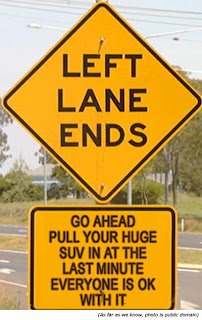Week of October 23—What We Can Learn from Horn Book Reviews
Monday, October 24—The Best Picture Book Releases of the Last Six Months
This week I received my copy of The Horn Book Guide to Children’s Young Adult Books. I am a new subscriber to The Horn Book (the quintessential guide to children’s literature) and didn’t even realize that this gem came with my subscription. “The Horn Book Guide strives to include short, critical reviews of all hardcover trade children’s and young adult books published in the United States within a six-month period. (Novelty books, board books, and mass market titles are reviewed selectively.) Qualified books that arrive . . . too late to be included will be reviewed in the next issue.” (The Horn Book Guide, Fall 2011, Volume XXII, Number 2, page 291).
329 picture books were reviewed in this volume, and that does not include a host of books in a separate category entitled “Preschool.” Each book is rated on a scale of 1 to 6 (with 1 being the highest score). Here’s what the ratings mean . . .
1 = Outstanding, noteworthy in style, content, and/or illustration
2 = Superior, well above average
3 = Recommended, satisfactory in style, content, and/or illustration
4 = Recommended, with minor flaws
5 = Marginal, seriously flawed, but with some redeeming quality
6 = Unacceptable in style, content, and/or illustration
The vast majority of books received a 3 or 4 rating. Twenty-six picture books (8%) received a “2” rating and none received a “1” rating. I want to learn from that 8%. What makes them stellar? What makes them memorable? Here’s the list of the 8%:
Are You Awake?
By Sophie Blackall
Holt/Ottaviano
A Call for a New Alphabet
By Jef Czekaj
Charlesbridge
Prudence Wants a Pet
By Cathleen Daly
Illustrated by Stephen MichaClinkel King
Roaring Brook
Clink
By Kelly DiPucchio
Illustrated by Matthew Myers
HarperCollins
Benedict
By Teresa Duran
Translated by Elisa Amado
Illustrated by Elena Val
Groundwood
My Side of the Car
By Kate Feiffer
Illustrated by Jules Feiffer
Candlewick
Three by the Sea
By Mini Grey
Knopf
The Wicked Big Toddlah Goes to New York
By Kevin Hawkes
Knopf
The Secret Box
By Barbara Lehman
Houghton
Manners Mash-Up: A Goofy Guide to Good Behavior
Dial
Goyangi Means Cat
By Christine McDonnell
Illustrated by Steve Johnson and Lou Fancher
Viking
Tia Isa Wants a Car
By Meg Medina
Illustrated by Claudio Munoz
Candlewick
The Honeybee Man
By Lela Nargi
Illustrated by Krysten Brooker
Random/Schartz & Wade
Ponyella
By Laura Numeroff and Nate Evans
Illustrated by Lynn Munsinger
Hyperion
Happy Endings: A Story About Suffixes
By Robin Pulver
Illustrated by Lynn Rowe Reed
Holiday
Tony Baloney
By Pam Munoz Ryan
Illustrated by Edwin Fotheringham
Scholastic
I’m Not
By Pam Smallcomb
Illustrated by Robert Weinstock
Random/Schwartz & Wade
Foxy and Egg
By Alex T. Smith
Holiday
Edwin Speaks Up
By April Stevens
Illustrated by Sophie Blackall
Random/Schwartz & Wade
The Little Red Pen
By Jane Stevens and Susan Stevens Crummel
Illustrated by Janet Stevens
Harcourt
Passing the Music Down
By Sarah Sullivan
Illustrated by Barry Root
Candlewick
Lost & Found: Three by Shaun Tan
By Shaun Tan
Scholastic
The Queen of France
By Tim Wadham
Illustrated by Kady MacDonald Denton
Candlewick
Harry & Hopper
By Margaret Wild
Illustrated by Freya Blackwood
Feiwell
The Invisible Man
By Arthur Yorinks
Illustrated by Doug Cushman
HarperCollins/Harper
Ten Birds
By Cybele Young
Kids Can
What makes these books critically acclaimed? Here are some of the comments about the text of these books that stood out to me:
· Appealing premise, fey logic, offbeat character
· Clever
· Unflinchingly evokes emotions and treats respectfully
· Witty dialogue
· Lyrical, laconic lilt
· Rollicking read-aloud, plays on words
· Witty narrative
· Cheerfully upbeat character
· The narrator incorporates Spanish words naturally, giving the dialogue authenticity
· Sly humor and light touch
· Genuinely sweet and moving climax
· This triumph of hope over reality ends on a high note
· Witty text, occasionally interspersed with onomatopoeic robot-centric words
· Dry humor and a wonderfully persistent protagonist elevate this book
· Amusing questions and answers; text is all dialogue
The good news for us is that this list includes well-known authors and new authors; books written and illustrated by one person and collaborations between an author and illustrator; books with a wide variety of topics and perspectives; and books from large and small publishing houses. In other words, the highest Horn Book ratings aren’t reserved for the high and mighty, the notables, or the famous. They are reserved for books that represent the best writing and illustrating in the world of picture books. That’s the club I’m striving to join—how about you?
It’s Your Turn!
1. Look for some of these critically-acclaimed books in your bookstore or library. Do a little informal research project and see what you like about the books and then determine how you could use what you learned to impact your writing.
















